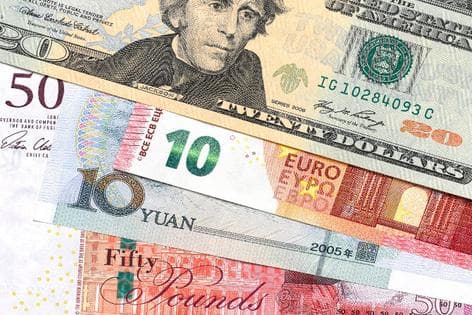Currency exchange rates affect nearly every business. With global supply chains the norm, the price of finished goods in one country are heavily influenced by the cost of raw materials and labor in another. If the value of the Chinese yuan rises versus the U.S. dollar, for instance, the cost of items sourced from China will likely increase as well. These higher costs are reflected in the prices we pay for everything from office supplies to computer equipment.
For companies with international subsidiaries or other reporting entities, however, exchange rates play an even bigger role, affecting not only costs, but also pricing strategy, earnings and the balance sheet as well. They also make preparing financial statements more difficult and can be a real headache for accounting staff. So before considering international expansion, it’s important to understand how to account for foreign currency transactions and the effort required to do it right.
Foreign Currency Transactions
One of the biggest challenges for companies conducting business internationally is the need to translate foreign currency values into a single functional currency for reporting purposes. In the U.S., the Financial Accounting Standards Board (FASB) sets the rules for doing this and understanding these rules is critical for businesses that need to comply with GAAP.
The accounting requirements for monetary assets and liabilities, like cash, accounts receivable and long-term debt differ from those for non-monetary assets and liabilities. Accounting for the latter, which include both tangible items like inventory and equipment, and intangibles, like patents or trademarks, is fairly straightforward. The foreign currency value of these assets is initially translated into the company's functional currency using the historical average exchange rate, after which, changes in in value due to depreciation, amortization or impairment remain in the functional currency.
Accounting for monetary assets and liabilities is more involved and takes more time, because the value of these assets changes whenever the exchange rate does. To ensure accurate reporting, the accounting team must update the value of these assets monthly using the current exchange rate. And because exchange rate fluctuations cause values to rise and fall, the difference must also be reported as either a gain or loss on the income statement.
Converting foreign currency transactions into the company’s functional currency often involves manual calculations and spreadsheets, and, depending on transaction volume, is a time-consuming process. To ensure accuracy, accounting staff must also look up the current exchange rate for each currency, which is often a manual process as well. Manually updating information frequently results in data-entry mistakes, increasing the risk of reporting errors. Transferring data from spreadsheets into an accounting system only adds to the risk.
Automate Currency Conversion
NetSuite minimizes the risk of errors related to currency conversion by automating the entire process. Transactions entered at the subsidiary level in a foreign currency are posted at the headquarters level simultaneously, using the appropriate currency and current exchange rate, saving time and minimizing the risk of reporting errors. This also simplifies the consolidation process, as financial results from each subsidiary are available to corporate accounting staff in real time. Currency gains and/or losses are also recorded automatically, helping ensure the accuracy of monthly income statements.




